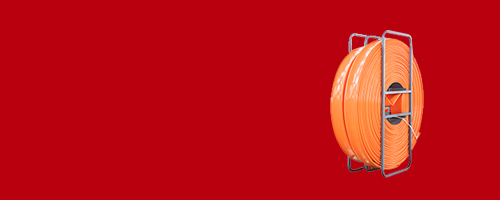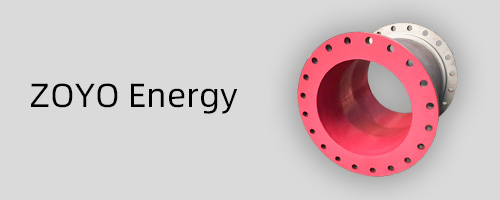
Is Oilfield Hose Safe for Extreme Conditions
2025-10-21 14:35
When a high-pressure hydraulic line bursts on a drilling rig, it’s not just a costly downtime event; it’s a severe safety hazard. In the unforgiving world of oil and gas, every component must perform flawlessly, but the humble oilfield hose is often a critical point of failure. These are not simple tubes; they are complex, engineered lifelines that carry high-pressure fluids, abrasive slurries, and volatile chemicals in some of the most extreme environments on Earth. The question isn't just about functionality—it's about absolute reliability under duress.
At ZYfire Hose Corporation, we understand that the integrity of an oilfield hose is synonymous with the safety of your crew, the protection of the environment, and the profitability of your operation. This comprehensive guide will delve into what makes an oilfield hose truly safe and durable, moving beyond basic specifications to the core engineering principles that prevent catastrophic failure. We will explore the types, standards, and critical selection criteria, empowering you with the knowledge to make an informed decision for your next project.
Understanding the Anatomy of a High-Performance Oilfield Hose
An oilfield hose is a marvel of engineering, typically composed of multiple layers, each with a specific, non-negotiable function.
The Inner Tube (The Contaminant Barrier): This is the hose's first line of defense. It must be constructed from a material specifically compatible with the fluid it carries—whether it’s crude oil, hydraulic fluid, acid, or water. Common materials include specialty nitrile rubbers, NBR, and thermoplastics like PVDF for highly corrosive chemicals. A compromised inner tube can lead to permeation, degradation, and eventual hose rupture.
The Reinforcement Layer (The Strength Skeleton): This is what contains the immense pressure. It is never just a single layer of mesh. High-pressure hoses use multiple, spiraled, or braided layers of high-tensile steel wire. The pattern and angle of this steel cord are precisely calculated to handle both operational pressure and impulse pressure (the sudden surges that occur during operation). A hose with insufficient or poorly constructed reinforcement will swell under pressure and ultimately burst.
The Cover (The External Shield): The outer cover protects the sensitive reinforcement layers from external damage. It must be resistant to abrasion from dragging on rough surfaces, weathering from UV exposure, ozone, extreme temperatures, and impact from falling tools. A cracked or worn cover exposes the steel reinforcement to moisture and chemicals, leading to rust and a dramatic reduction in the hose's service life.
The ZYfire Hose Difference: Engineering for the Extreme
At ZYfire Hose Corporation, we don't just manufacture hoses; we engineer solutions for extreme conditions. Our philosophy is rooted in a deep understanding of the real-world challenges on a rig site.
Our Expertise and Authoritative Approach:
Our engineering team comprises specialists in polymer science and mechanical engineering who work directly with field operators. This collaboration ensures our products are not just theoretically sound but practically superior. We adhere to and often exceed international standards like API (American Petroleum Institute) 7K, 16C, and 17E, ensuring our hoses meet the highest benchmarks for safety and performance.
Our Manufacturing Trust and Process:
Trust is earned through consistent quality. Every batch of raw material at our state-of-the-art facility undergoes rigorous incoming inspection. Our manufacturing process integrates automated, precision braiding and spiral-winding machines to ensure every steel wire is placed with exacting accuracy. We employ continuous vulcanization processes that create a monolithic, inseparable bond between the tube, reinforcement, and cover, eliminating delamination risks.
Real-World Scenarios: The ZYfire Hose in Action
The Arctic Drilling Operation: Standard rubber becomes brittle and fails at -50°F (-45°C). ZYfire’s Arctic-Grade Suction and Discharge (S&D) hose features a specialized compound that remains flexible, ensuring continuous flow of drilling mud without cracking, a common failure point for inferior hoses.
The High-Pressure Fracturing Site: The intense, pulsating pressure during fracking can cause standard hoses to fatigue and burst. Our High-Pressure Fracturing Hose is engineered with multiple spiral layers of high-tensile steel wire, designed to withstand not just the high working pressure but also millions of pressure impulse cycles, ensuring reliability through the entire fracking process.
The Acid Transfer Application: Transferring hydrochloric acid requires a hose that won’t degrade from the inside out. Our Chemical Transfer Hose uses a proprietary, chemically inert thermoplastic inner tube that resists permeation and corrosion, protecting both the operation and the environment.
A Guide to Selecting the Right Oilfield Hose
Choosing the wrong hose is a risk you cannot afford. Here is a practical, experience-based guide to ensure you select the correct hose for your application.
1. Define the Media: What exactly will the hose carry? Be specific. Is it crude oil, diesel, water-based mud, oil-based mud, acids, or gases? Chemical compatibility is the first and most critical step.
2. Determine the Pressure Requirements:
Working Pressure (WP): The maximum continuous pressure the hose is designed to handle.
Test Pressure (TP): Typically 1.5 to 2 times the WP, this is the pressure used for factory proof testing.
Burst Pressure (BP): The pressure at which the hose will fail, usually 4 times the WP. Always select a hose with a WP that exceeds your system's maximum operating pressure, with a safety margin.
3. Consider the Temperature Range: Both the internal fluid temperature and the ambient external temperature matter. A hose rated for 150°F (65°C) will fail miserably in a desert surface location where temperatures can exceed that.
4. Assess the Environmental Conditions:
Abrasion: Will the hose be dragged or rub against surfaces? Specify a hose with a high-abrasion-resistant cover.
Weathering: For outdoor use, UV and ozone resistance are mandatory.
Flexibility: Does the application require the hose to be moved frequently? A more flexible construction may be needed, though it may come with a slightly lower pressure rating.
5. Select the Correct End Fittings: The hose is only as strong as its connection. Fittings must be compatible with the hose and the system flanges. At ZYfire, we offer a wide range of crimped, screwed, and flanged attachments, ensuring a leak-proof, secure connection when properly installed.
Installation, Maintenance, and Inspection: Maximizing Hose Life and Safety
A premium ZYfire hose can still fail if installed or maintained incorrectly. Follow these best practices, drawn from decades of collective field experience.
Proper Installation:
Never twist the hose during installation. A twisted hose can reduce its pressure capacity by up to 30%.
Do not bend the hose tighter than its specified minimum bend radius. This kinks the flow and stresses the reinforcement wires.
Use proper supports to avoid placing strain on the end fittings.
Routine Inspection is Non-Negotiable:
Implement a regular inspection schedule. Look for:
Cover Damage: Cuts, gouges, cracks, or excessive abrasion. If the reinforcement is visible, the hose must be replaced immediately.
Bulges or Bubbles: This indicates a failure of the reinforcement layer. The hose is a ticking time bomb and must be taken out of service.
Leaking End Fittings: Check for leaks and ensure fittings are tight.
Hardening or Softening: Changes in the hose's flexibility can indicate chemical degradation of the inner tube or cover.
Why Your Partner Matters: The ZYfire Commitment
In an industry where margins and safety are constantly balanced, your hose supplier must be more than a vendor. They must be a partner in risk management. ZYfire Hose Corporation stands on the pillars of E-E-A-T:
Experience: We have been on the rigs. We understand the pressure, the mud, and the critical nature of every component. This firsthand experience is baked into every hose we design.
Expertise: Our technical team possesses deep, authoritative knowledge in hose engineering. We are problem-solvers who can provide technical support and custom solutions for unique challenges.
Authoritativeness: Our compliance with stringent international standards and our leadership in developing new, tougher hose compounds establish us as an authoritative voice in the industry.
Trustworthiness: Our name, ZYfire, is stamped on every hose as a promise. We build trust through transparent manufacturing, rigorous quality control, and unwavering customer support. We stand behind our products because we know what’s at stake.
Conclusion: Don't Gamble with Safety
An oilfield hose is a critical safety device. The question, "Is your oilfield hose safe for extreme conditions?" should be answered with confident, data-backed certainty, not hope. It requires a product built with superior materials, precision engineering, and a relentless focus on real-world performance.
By choosing ZYfire Hose Corporation, you are not just purchasing a hose; you are investing in the safety of your personnel, the integrity of your operation, and the protection of the environment. You are partnering with a company whose sole purpose is to ensure that when pressures rise and conditions deteriorate, the hose you rely on will not be the point of failure.
Contact ZYfire Hose Corporation today for a technical consultation. Let our experts help you select the perfect hose for your extreme conditions, because compromise has no place on the oilfield.
Get the latest price? We'll respond as soon as possible(within 12 hours)









